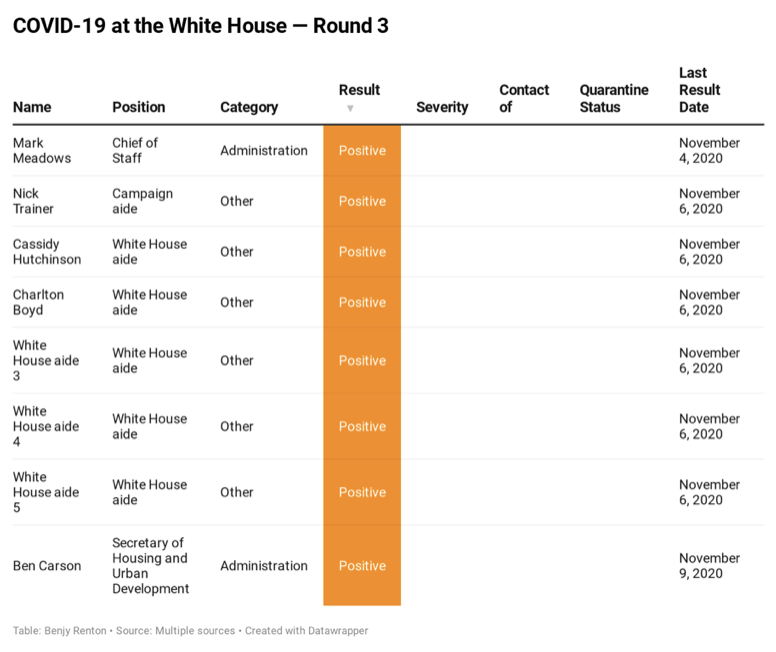POLICY BRIEFING – WEEK IN REVIEW
Amid rising coronavirus cases and hospitalizations, the Trump Administration argued on Tuesday, November 10th that the entirety of the Affordable Care Act (ACA), including its protections for the millions living with preexisting conditions, should be struck down as unconstitutional. This is particularly problematic now as the United States crosses 10 million coronavirus cases, such that many Americans have acquired preexisting conditions as a result of a poorly-controlled pandemic, and which could constitute grounds for insurance denial in the absence of the ACA's protections.
Stripping insurance from tens of millions of Americans during a deadly pandemic poses the additional challenge: even among those thus far not contracting coronavirus, many have had greater mental health needs amid the pandemic. Coverage for such services currently falls under the essential health benefits of the ACA.
How did the oral arguments unfold? Fortunately, the Supreme Court justices did not appear to show much interest in being receptive to the arguments for its invalidation made by layers for the Trump Administration. The case heard yesterday arose because the 2017 Tax Cuts and Jobs Act zeroed out the penalty for individuals who failed to enroll in health insurance. (The individual mandate component of the ACA was previously upheld by the Supreme Court based on Congress's power to tax). This new lawsuit, California v. Texas, hinges on two substantive questions: 1) Since the mandate penalty was upheld based on Congress's power to tax, is the a penalty-free mandate unconstitutional? And 2) If the current mandate is unconstitutional, can it be severed from the rest of the ACA, or must the entire law be struck down as unconstitutional?
During the arguments yesterday, Chief Justice John Roberts asked why there was a "bait and switch" from viewing the mandate as essential to the ACA to viewing the ACA as functional with the zeroed-out penalty. To this, Donald Verrilli, a lawyer working on behalf of Democrats in the House of Representatives responded that they had learned that the law seems to work anyway: "It turns out that carrots work without the stick." Justice Sonia Sotomayor commented that if Congress wanted the entirety of the Affordable Care Act to be struck down, they would have voted to do so but they did not, suggesting that Congress felt that the ACA could continue to exist even without the penalty in place. It was for these reasons that Justice Brett Kavanaugh commented that the case appears straightforward with respect to severability: that is, that the Court presumes that any portion of a law found to be unconstitutional is severable from the rest of the Act, rather than necessitating that the entire Act be struck down as invalid. Moreover, Chief Justice Roberts appealed to notions of judicial restraint, commenting that striking down the Affordable Care Act when Congress would not is "not our job."
While it is altogether possible that the mandate will be struck down as unconstitutional, it is likely from the oral arguments yesterday that the rest of the ACA will remain intact for the long run under a Biden administration. Abbreviated from Brief19 for 11 November 2020.
Amidst record-breaking voter turnout, the coronavirus pandemic has continued to set records of its own. Friday saw a third straight day of all-time highs, at 132,700, as well as more than 1,000 deaths for the fourth day in a row. 27 states have set weekly case records, and 17 states set one day case totals. Globally new daily cases have surpassed 605,000 for the first time, and countries are reinstating various lockdown measures.There is some good news, however. The increased enforcement and practice of social distancing seems to have lowered the prevalence of influenza cases as the Northern Hemisphere moves into the winter season. Various. 9 November 2020.
